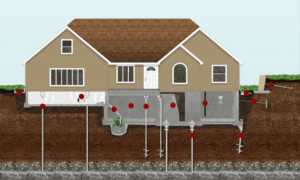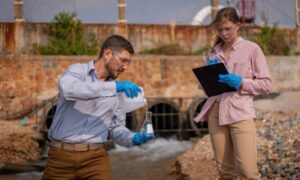Every day of the year, twice a day, weather balloons are released from an estimated 900 locations worldwide, according to the National Weather Service. On the 25th of September another weather balloon can be added to that number as Project Etheric will be launching its next series of atmospheric balloons near Atlanta, Georgia. The event is free and open to the public and event organizers are encouraging those who wish to learn and participate to attend.
About the Launch
Each Project Etheric launch intends to make use of more data capturing equipment than the last in order to capture a wide variety of data (including audio and video). Over the last few years the The Meta-Center of Chicago has been having many public and private projects to exercise a thesis.
Rather, it is about e.s.p. (extra-sensory perception), space, time, the intricacies of inter-species communication, which is also known as the hundredth monkey effect, and much more. The hundredth monkey effect is a hypothetical phenomenon in which a new idea or behavior spreads quickly and inexplicably from one group to all related groups once critical members of a group exhibit the new behavior or idea. A classic example of this was allegedly observed on the widely separated Japanese islands, where troops of monkeys spontaneously started to wash sand off their food.
Project Etheric’s first set of atmospheric balloons was launched on July, 31st, 2021 in New Lenox, Illinois. The journey footage from launch to retrieval is available on the Project Etheric website. A third launch is planned for Arizona in mid-October. The Chicago-based community organization seeks to offer more publicly accessible STEM-related activities to inspire youth and adults through hands-on projects.
Recommended to Watch:
About the Meta-Center
Totukani Amen is the project lead. This well-known Metaphysician, herbalist and engineer has been in many STEM-related fields for decades and teaches a multitude of subjects, including interesting ways to use math in order to infer solutions that may have not been readily known. Totukani Amen has many published works and he has dedicated his life to seeking out and understanding the strange and unusual of reality. Having hosted numerous events across America over the last two decades, Amen demonstrated the intricacies of our shared reality to others.
“This project was not a sole endeavor. A special thank you to Marisela Arellano and Aneez Ali for their specialized assistance from content marketing to social engagement. The creativity put forth had everyone smiling and excited for what would come forth,” said Totukani Amen.
Weather Balloons: A Valuable Science Tool
Weather balloons are usually filled with hydrogen or helium and typically made from latex or synthetic rubber. Interestingly, a weather balloon’s sides can thin out to 0.0025 millimeters at typical bursting altitudes – which is roughly 20x thinner than the pre-launch thickness. A similar impressive observation can be noticed with the balloon diameter. Balloons start out at around 6ft wide before release, but can expand up to 20ft, reaching altitudes of 24 miles or more before bursting.
Instruments, like the radiosonde, are attached to the balloon and measure pressure, temperature and relative humidity as the balloon rises higher and higher into the atmosphere. Made to endure extreme conditions, the instrument transmits data to tracking equipment on the ground in short intervals, typically every few seconds. By tracking the position of the radiosonde, wind speed and direction can be calculated.
Once the weather balloon bursts, the radiosonde falls slowly and safely to the ground with the help of a parachute. These instruments have been known to fall to ground at speeds of 22 miles per hour and less. If members of the public happen to find a radiosonde, a mailing bag and instructions on what to are usually attached to the instrument. Around 20% of the radiosondes sent up each year are found and returned. These instruments are then repaired and reused.
Weather balloons are a primary source of data above the ground and provide valuable input for computer forecast models, local data for meteorologists as well as data for research.



































